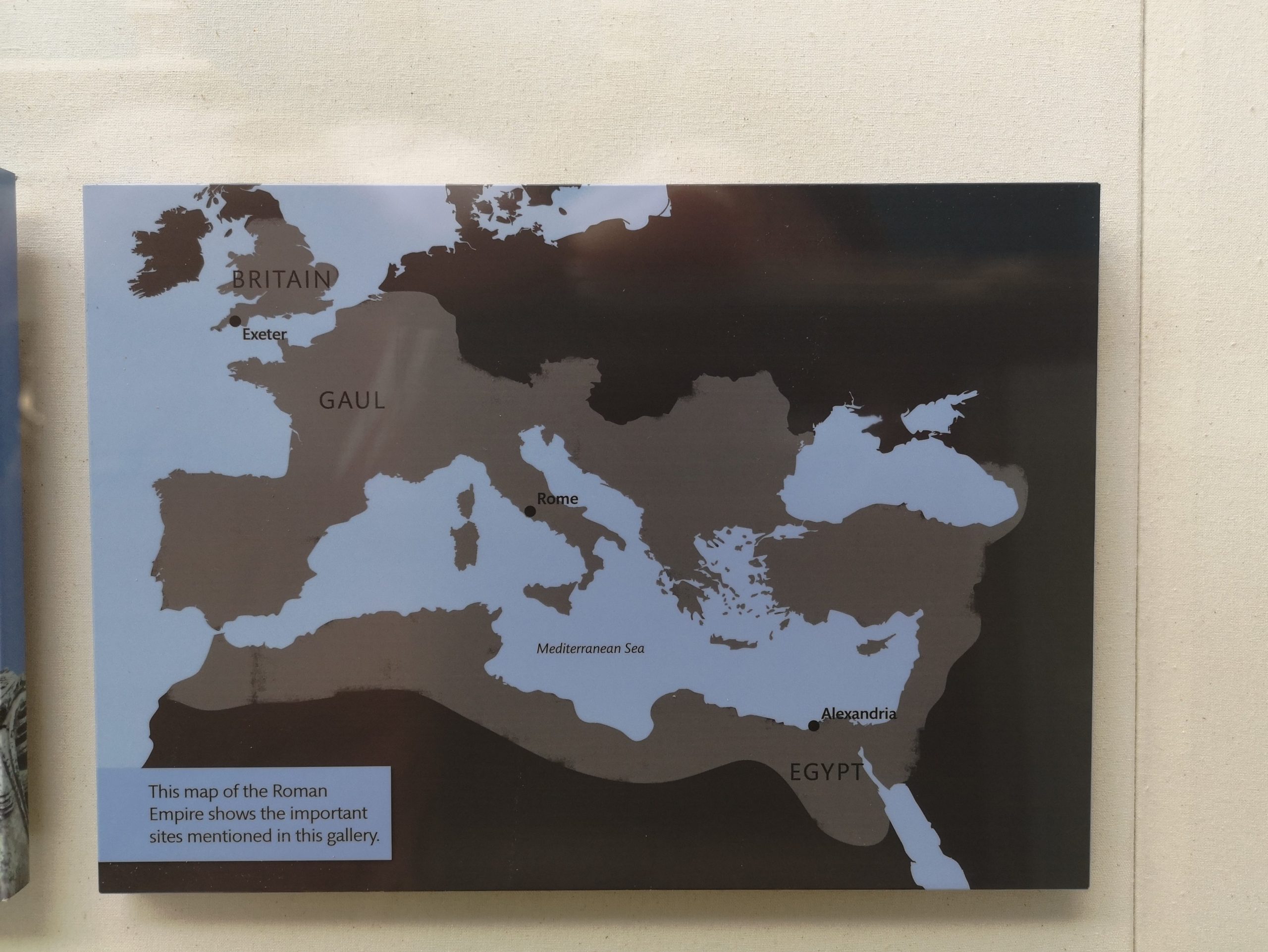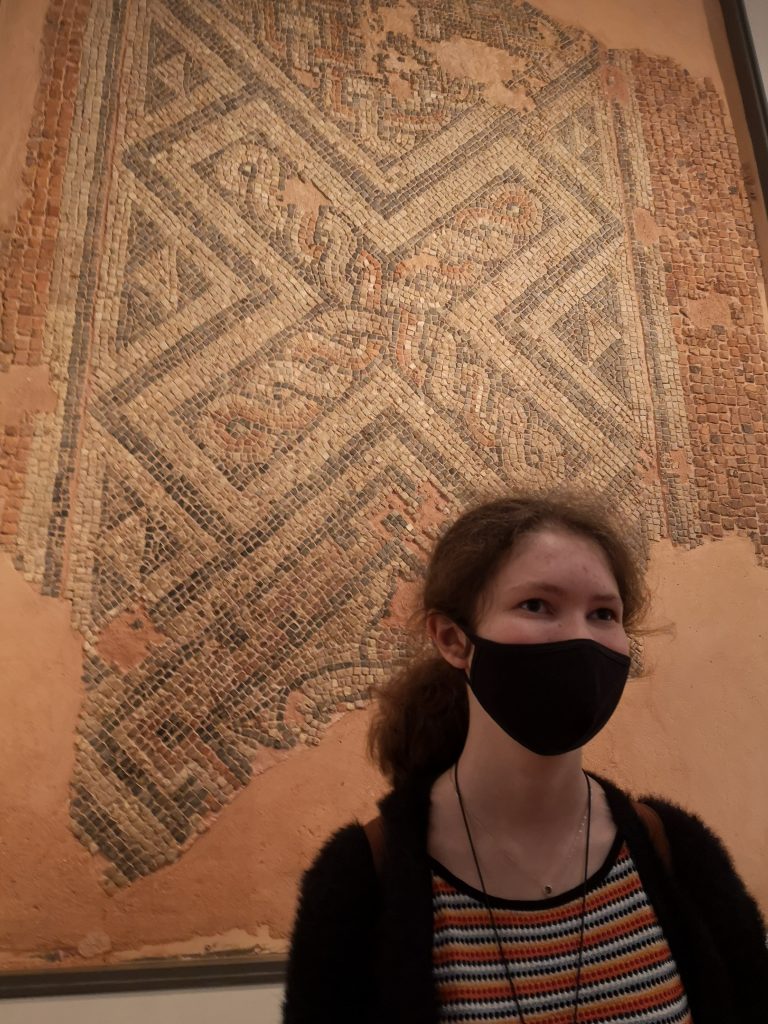Today I went to the Royal Albert Memorial Museum with mum. We went to visit the Roman exhibition and the Roman Empire in Britain information section.
One of the items we saw was clay tablet about two long and an inch wide. This tablet logged the flour portions for each family in a village in an early form of writing. I found this interesting because it demonstrated that scientific techniques are used to identify writing and materials from ancient times. Archaeologists were able to decipher that this particular tablet was a log of flour rations. What this clay tablet so memorable was how much was how much was written on it, and in such a small font and how it had rounded edges and didn’t show signs of a being a broken piece of a bigger tablet. It didn’t specify how these marks were made, but they were small enough marks that I think they were made by a small twig or even by the person writing it pressing their fingernail into the clay. The other thing I find fascinating is that this specimen was able to survive, as it was mentioned in its description that the people using it would have been able to wet it and reuse it for something else: kind of like a modern day whiteboard!
Some of the questions that this particular item raises for me are:
What were food supplies like in these times?
Was there a particular system used to identify who should get more or less of a particular project?
Did these things cost money or did they have a trading system where the receiver of an item had to give the producer an item they had produced in return?
In part why I have been interested in Roman civilisation is Devon, and Exeter in particular, were once a Roman occupied area. Exeter was one a fortified city meaning it had walls running around the outside of it. Although that wall has long since mostly been knocked down and replaced by modern roads, there are still redbrick lines running through the roads marking where the wall would have been, and a walk along the back roads that follows the path of the ancient wall.
Exeter is not the only non-Italian realm area that the Romans occupied. Their empire stretched from Modern England through Europe and all the way to the North coast of Africa and the Western edges of Asia (eg. Turkey, Jordan, and Israel).

One of the tell-tale signs of a once Roman settlement can be the appearance of intricate mosaics. The Royal Albert Memorial Museum in Exeter had them scattered around amongst the exhibits. The centre piece of the Romans in Devon exhibition area was very large and extremely impressive.

Jenn
Livi – I thought the Victoria &albert museum was in London. Is this some kind of extension closer to you or have you all been traveling? Many of our museums are still closed here in the states. :0(